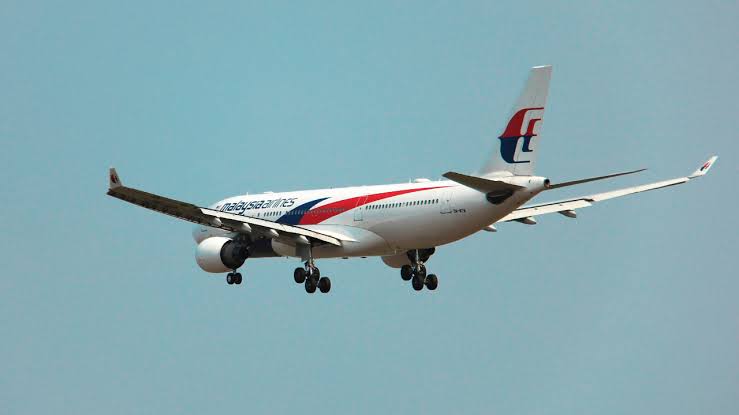Malaysia airlines mh370 google maps

The disappearance of Malaysia Airlines MH370 is one of the greatest aviation mysteries in history. On March 8, 2014, the Boeing 777 vanished from radar while en route from Kuala Lumpur to Beijing, carrying 239 passengers and crew. For years, search efforts have failed to locate the plane, leaving the world with unanswered questions. However, a unique theory has emerged: Could Google Maps hold the key to uncovering the final resting place of Malaysia Airlines MH370?
In this blog post, we will dive deep into this intriguing idea, explore why people believe Google Maps might help solve the mystery, and examine how online sleuths have used the platform to search for evidence.
The Rise of Satellite Sleuths: How People Are Using Google Maps
After years of fruitless searches, many people have turned to alternative methods to investigate the disappearance of MH370. One of the most intriguing methods? Using Google Maps and Google Earth to scour the globe for signs of the lost aircraft.
Google Maps allows users to access satellite imagery of almost any location on Earth. Some believe that with the right focus and enough patience, amateur investigators could spot debris or other clues that professionals might have missed. The idea here is simple: if thousands of people are looking, there’s a better chance of finding something hidden in satellite images.
Why Malaysia Airlines MH370 Remains a Mystery
Before we dive further into the Google Maps angle, let’s briefly recap why the disappearance of MH370 is still unsolved.
Shortly after takeoff, the plane lost communication with air traffic control. Its transponder, which sends signals about the aircraft’s location, was turned off. MH370 veered off course, flying in a completely different direction from its original flight path. After seven hours, the plane is believed to have run out of fuel and crashed somewhere in the southern Indian Ocean.
Despite extensive search efforts, including the use of sonar, underwater drones, and satellite data, the plane’s wreckage has never been fully found. Only a few pieces of debris have washed up on distant shores, keeping the mystery alive.
Can Google Maps Help Find MH370?
Over the years, a dedicated group of online sleuths has searched Google Maps and Google Earth for any trace of Malaysia Airlines MH370. These tools offer access to high-resolution satellite images, which are updated frequently. Enthusiasts believe that if wreckage is visible on the surface of the ocean, Google’s images might capture it.
One of the most famous attempts was made by British video producer Ian Wilson, who claimed in 2018 to have spotted what looked like an airplane in a jungle on Google Maps. The coordinates showed a white object resembling a plane in Cambodia’s dense forest. However, upon further investigation, no wreckage was found in that location, raising questions about the limitations of using satellite images to track down the aircraft.
Challenges of Finding MH370 on Google Maps
While the idea of using Google Maps to locate MH370 is fascinating, it’s important to recognize the challenges:
- Resolution: Although Google Maps offers impressive satellite views, the resolution might not be sharp enough to detect small objects, especially if they’ve been submerged underwater or covered by debris over time.
- Vast Search Area: The Indian Ocean, where experts believe MH370 crashed, is massive. Even though Google Maps allows for global viewing, searching such a large and deep area from space is a monumental task.
- Constant Change: The ocean is in constant motion. Wreckage might have moved or sunk to the ocean floor, which wouldn’t be visible in satellite imagery. Debris that washes ashore might have already decomposed or been missed by satellite images if the timing wasn’t right.
- Image Updates: Google Maps and Google Earth update their images, but not in real-time. This means that even if wreckage was visible for a short period, it might no longer appear in newer satellite captures.
What Keeps the Search Alive?
Despite these challenges, the idea of using Google Maps and other satellite tools keeps hope alive. For many families and investigators, the mystery of Malaysia Airlines MH370 remains a haunting unsolved case. Any new theory, even one based on satellite images, brings a renewed sense of hope that answers might one day be found.
It’s also a testament to the power of crowdsourcing. Thousands of people across the globe are willing to dedicate time to scour satellite images in the hope of contributing to one of the most significant search efforts in aviation history.
Conclusion: The Role of Google Maps in the MH370 Search
While malaysia airlines mh370 google maps is an incredibly powerful tool for exploring the world from above, it might not be the magic solution for locating Malaysia Airlines MH370. However, the idea of satellite sleuthing has added a new layer of intrigue to the ongoing search. It highlights how everyday technology, when combined with human perseverance, can bring hope in even the most baffling of mysteries.
The disappearance of MH370 remains one of the most puzzling events in modern aviation, but perhaps one day, whether through satellite imagery or another means, the final chapter will be written.
FAQs About Malaysia Airlines MH370 and Google Maps
1. Can Google Maps really help find MH370?
It’s unlikely, given the resolution and the vastness of the ocean. However, many people believe it could provide clues, so the search continues on the platform.
2. Has anyone found evidence of MH370 on Google Maps?
Several people have claimed to spot potential wreckage, but so far, none of these claims have been verified by authorities.
3. Why is MH370 so hard to find?
The plane is believed to have crashed in a remote part of the southern Indian Ocean, which is incredibly vast and deep. The transponder was turned off, making tracking the flight’s path difficult.
4. What is the significance of the debris found?
Some pieces of debris have washed ashore, confirming that MH370 crashed, but the main wreckage has never been located.
5. How often does Google Maps update satellite images?
Google Maps updates satellite images periodically, but it’s not in real-time, which makes it difficult to capture short-lived events like debris floating in the ocean.



